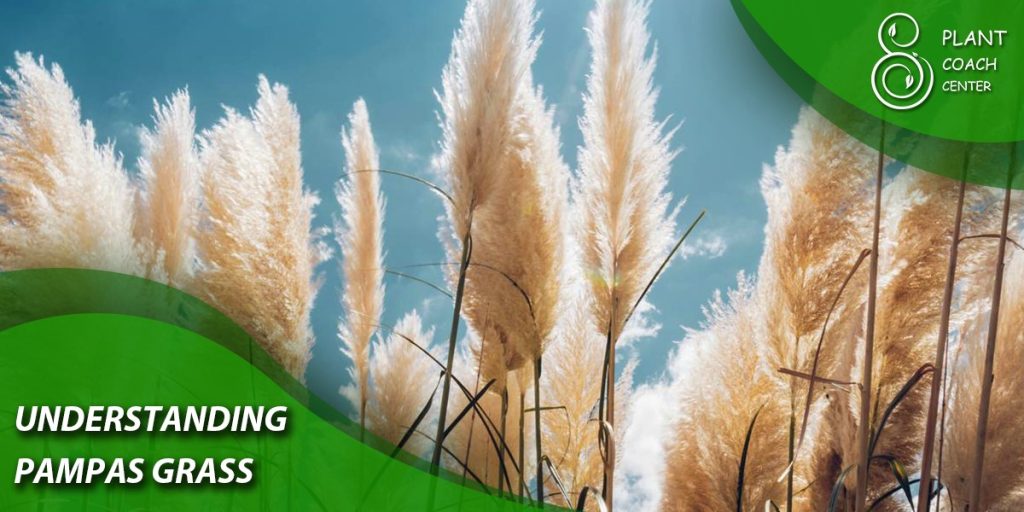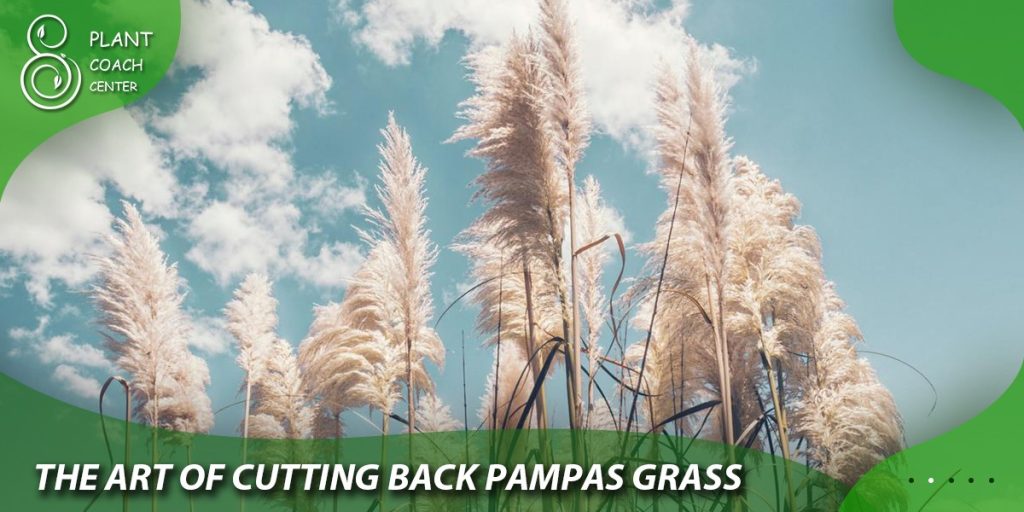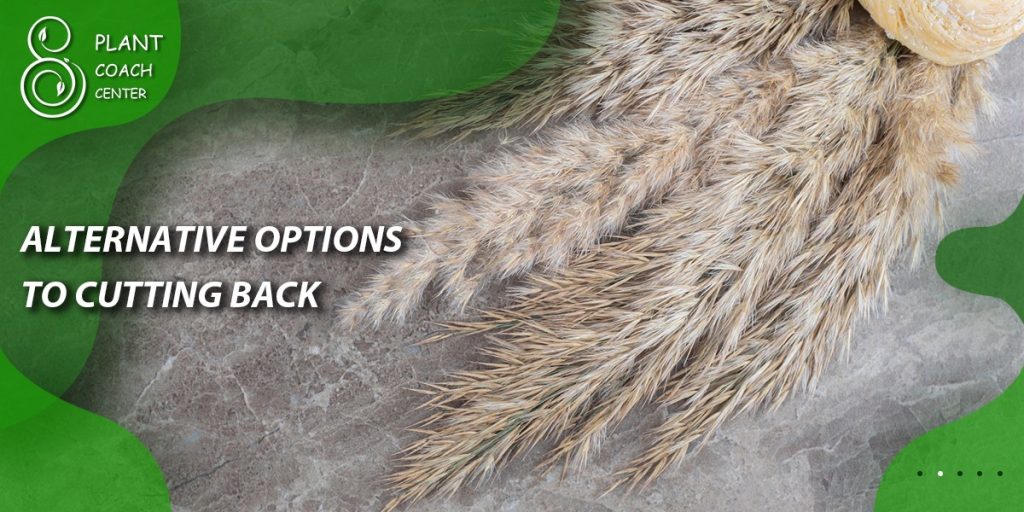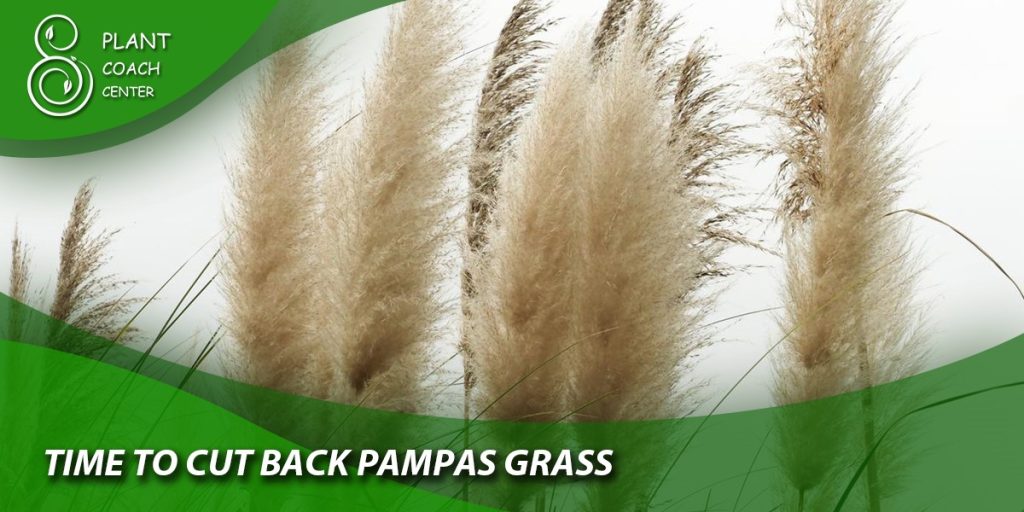When to Cut Back Pampas Grass
Pampas grass (Cortaderia selloana) is a magnificent plant known for its tall plumes and graceful presence in the garden. Its feathery fronds and impressive height add texture and drama to any landscape. However, like any other plant, it requires proper care and maintenance to thrive and retain its beauty. One crucial aspect of maintaining healthy pampas grass is knowing when and how to cut it back.

Understanding Pampas Grass
Pampas grass is a perennial plant native to South America, specifically the pampas regions of Argentina and Brazil. It has gained popularity worldwide for its ornamental value and adaptability to various climates. Pampas grass typically grows in clumps, with long, slender leaves that can reach heights of 8 to 12 feet or more.
This plant thrives in full sun and well-draining soil. It is tolerant of various soil types, including sandy and loamy soils. Pampas grass is also highly drought-resistant, making it an excellent choice for arid regions. Additionally, its plumes, which appear in late summer or early fall, add a touch of elegance to the landscape.
Plant Coaching: What Is It and Why Is It Important?
Plant coaching involves providing guidance and care to plants, enabling them to grow and flourish in their environment. It is essential for maintaining healthy pampas grass, as it helps address common problems and ensures optimal growth conditions. Regular plant coaching can prevent or mitigate issues that may arise, enhancing your pampas grass’s overall health and appearance.
Regular coaching and maintenance provide numerous benefits. They help promote vigorous growth, reduce the risk of pest infestations and diseases, and ensure the plant remains in harmony with its surroundings. Moreover, plant coaching allows you to tailor the growth and size of pampas grass to suit your landscape preferences.
Common Problems with Pampas Grass
While pampas grass is generally hardy, it is susceptible to various problems that can hinder its growth and affect its aesthetic appeal. Understanding and addressing these common issues is crucial for maintaining the health and vitality of your pampas grass.
Pest Infestations and Diseases
Pampas grass may encounter pests such as aphids, mealybugs, or scale insects. These pests can feed on the plant’s foliage, weaken it, and transmit diseases. Regular inspection is vital for early detection, allowing prompt intervention and treatment.
Preventing pest infestations involves:
- Implementing proactive measures, such as promoting a healthy environment.
- Encouraging beneficial insects.
- Using organic pest control methods when necessary.
When facing diseases, it is essential to identify the symptoms and consult with a gardening professional for appropriate treatment options.
Nutritional Deficiencies and Soil Conditions
Like any living organism, pampas grass requires specific nutrients for optimal growth. Nutritional deficiencies can manifest as discoloration, stunted growth, or leaf deformities. A soil test can help determine the nutrient composition and identify any deficiencies.
In addition to nutritional requirements, pampas grass thrives in well-draining soil. Poorly drained soil can lead to root rot and other issues. Regular soil amendments, such as adding organic matter or improving drainage, can help maintain the ideal soil conditions for pampas grass.
Overgrowth and Encroachment
Pampas grass tends to spread and become overgrown if not appropriately managed. Its robust growth can lead to encroachment on neighboring plants or structures. Proper management techniques are essential to control its size and density, preventing it from becoming invasive.
One way to manage overgrowth is through regular cutting back or pruning. However, knowing the appropriate time and technique for this task is crucial to avoid damaging the plant or inhibiting future growth. The next section will detail the art of cutting back pampas grass.

The Art of Cutting Back Pampas Grass
Pruning vs. Cutting Back: What’s the Difference?
Before we delve into the specifics of cutting back pampas grass, it’s essential to understand the difference between pruning and cutting back. Pruning typically involves removing dead, damaged, or diseased plant parts, such as leaves, stems, or branches. It is performed to improve the overall health and appearance of the plant.
On the other hand, cutting back refers to the more substantial removal of plant material, often done to manage size, control growth, or rejuvenate the plant. When it comes to pampas grass, cutting back is often necessary to prevent overgrowth and maintain its aesthetic appeal.
Determining the Right Time to Cut Back Pampas Grass
Timing is crucial when it comes to cutting back pampas grass. While pampas grass is resilient, choosing the right time to ensure its health and promote vigorous regrowth is essential.
Late winter or early spring is generally the ideal time to cut back pampas grass. This period aligns with the plant’s dormant phase when it naturally slows down its growth, and the foliage turns brown or tan. Cutting back during the dormant phase minimizes the risk of interrupting the plant’s active growth cycle. It ensures that it will rebound vigorously in the upcoming growing season.
Pampas grass may retain its green foliage throughout the year in regions with milder winters. In such cases, you can still proceed with cutting back as long as you ensure it is in the dormant phase. Look for signs of reduced growth or browning of the foliage as indications that the plant is dormant and ready for cutting back.
By waiting until the dormant period, you avoid cutting back pampas grass when it grows actively. Cutting back during the growing season can shock the plant and weaken its health. It can also disrupt the plant’s ability to produce new growth, resulting in a less robust and attractive appearance.
If you need help determining the right time to cut back your pampas grass, consider consulting with local gardening experts or experienced horticulturists. They can provide valuable insights into your region’s specific climate and growing conditions, helping you determine the optimal timing for cutting back pampas grass.
Remember, each garden and climate may have slight variations in the best time for cutting back pampas grass. It’s essential to consider local conditions and observe your plant’s growth patterns to make an informed decision.
Choosing the right moment to cut back your pampas grass ensures the plant rejuvenates and thrives once the growing season begins. It sets the stage for healthy regrowth and maintains the visual appeal of your pampas grass throughout the year.
By understanding the importance of timing and aligning your cutting-back practices with the dormant phase, you can promote your pampas grass’s long-term health and vitality, ensuring its beauty and resilience for years.
Tools and Techniques for Pruning Pampas Grass
You’ll need the right tools and techniques to cut back pampas grass successfully. Here are the essential tools you should have:
- Pruning shears or loppers: These tools are suitable for cutting through smaller stems and foliage.
- Hedge trimmer or power pruner: A hedge trimmer or power pruner can expedite the process if your pampas grass has significant overgrowth. However, exercise caution when using power tools to avoid damaging the plant or injuring yourself.
When cutting back pampas grass, it’s essential to protect yourself. Wear long sleeves, pants, gloves, and safety goggles to shield your skin and eyes from irritants like sharp leaf blades or loose debris.
pic 3 optimal time to cut back pampas grass
Step-by-Step Guide to Cutting Back Pampas Grass Safely
- Prepare the area: Clear the area around the pampas grass of any obstacles, such as furniture or decorative items. Lay a tarp or plastic sheet to collect the cut foliage for easy disposal.
- Tie up the grass: Use twine or rope to gather the foliage of the pampas grass into a tight bundle. This will make it easier to handle and prevent the leaves from scattering during the cutting process.
- Cut back the grass: Starting from the top, use your pruning shears, loppers, or hedge trimmer to cut the foliage down to a few feet from the ground. Take care to make clean cuts, avoiding any damage to the base of the plant.
- Dispose of the cut foliage: Carefully bundle it up and place it on the tarp or plastic sheet. Double-check the area to ensure you’ve collected all the cuttings.
- Clean the area: Remove the tarp or plastic sheet and dispose of the cut foliage according to local waste disposal guidelines. Rake the area around the pampas grass to clear any remaining debris.
Post-Pruning Care and Maintenance Tips
After cutting back your pampas grass, it’s essential to provide proper care to ensure its healthy regrowth. Here are some post-pruning care tips:
- Watering: Resume regular watering once the growing season begins. Deep, infrequent watering promotes strong root development and overall plant health.
- Fertilization: Apply a balanced slow-release fertilizer around the base of the plant during the early spring. Follow the manufacturer’s instructions for proper dosage and application.
- Mulching: Apply a layer of organic mulch, such as wood chips or straw, around the base of the pampas grass. Mulching helps retain moisture, suppress weed growth, and provide insulation for the roots.
- Monitoring: Regularly inspect your pampas grass for signs of pests, diseases, or nutritional deficiencies. Address any issues promptly to prevent further damage.
By following these cutting-back techniques and providing appropriate post-pruning care, you can ensure the health and vitality of your pampas grass, keeping it in optimal condition for years to come.

Alternative Options to Cutting Back
While cutting back is a common practice for managing pampas grass, there are alternative options depending on your specific circumstances and preferences.
- Dividing and Transplanting Pampas Grass: If your pampas grass has become too large for its current location, dividing and transplanting it can be a viable solution. Dividing the plant involves carefully digging up the clump and separating it into smaller sections, each with its own set of roots. Transplant the divided sections to new areas of your garden or share them with fellow gardening enthusiasts.
- Renovation Techniques for Overgrown Pampas Grass: In cases where pampas grass has been neglected for an extended period, and cutting it back would result in an unsightly appearance, renovation techniques can be employed. Renovation involves removing the plant, including the root system, and replanting new, smaller specimens. This process allows you to rejuvenate the area while maintaining the attractive qualities of pampas grass.
- Non-Invasive Alternatives to Consider: If you’re concerned about the invasive nature of pampas grass or its potential to infringe on other plants or areas of your garden, you may opt for non-invasive alternatives. Several grass-like plants and ornamental grasses offer similar visual appeal without aggressive growth habits. Research and consult local gardening experts to find suitable substitutes for your landscape design and region.

Tips for Preventing Common Problems and Maintaining Healthy Pampas Grass
While cutting back pampas grass and addressing specific issues are important, prevention and ongoing maintenance are vital to ensuring your plants’ long-term health and beauty. Here are some essential tips to help you prevent common problems and maintain healthy pampas grass:
Best Practices for Soil Preparation and Planting
Before planting pampas grass, ensure the soil is well-draining and amended with organic matter. Proper soil preparation helps establish a strong foundation for healthy growth.
Proper Irrigation and Watering Techniques
Pampas grass is drought-tolerant once established but benefits from regular watering during its initial growth stages. Water deeply and infrequently to encourage profound root growth and minimize surface moisture, which can attract pests and diseases.
Fertilization and Nutrient Management Strategies
Pampas grass requires minimal fertilization. However, applying a balanced slow-release fertilizer in the early spring can provide essential nutrients for vigorous growth. Avoid over-fertilizing, as excessive nutrients can lead to increased susceptibility to diseases.
Regular Monitoring and Early Detection of Issues
Keep a watchful eye on your pampas grass, checking for any signs of pests, diseases, or nutritional deficiencies. Early detection allows for timely intervention and reduces the risk of significant damage.
Conclusion
Knowing when to cut back pampas grass is crucial for maintaining its health and aesthetic appeal. Through regular plant coaching, you can address common problems such as pest infestations, nutritional deficiencies, and overgrowth. You can ensure your pampas grass’s long-term vitality and beauty by following proper cutting-back techniques, considering alternative options, and implementing preventive measures.
Remember that plant coaching extends beyond cutting back; it involves ongoing care, monitoring, and adapting to the changing needs of your plants. By fostering a harmonious relationship with your pampas grass, you can enjoy its splendor and make it a highlight of your garden for years to come.
When is the best time to cut back pampas grass?
Late winter or early spring.
How can I prevent pest infestations in my pampas grass?
Maintain a healthy environment and employ organic pest control methods.
Can I transplant overgrown pampas grass?
Yes, dividing and transplanting is a viable option for managing its size.







